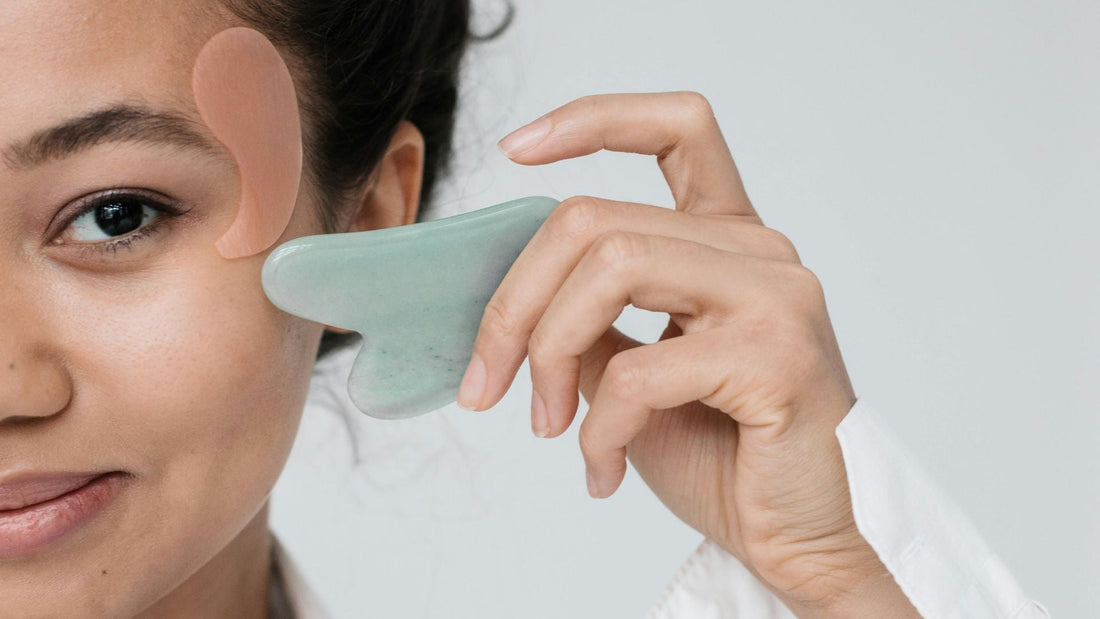
Gua Sha Evolved: Understanding the Difference Between Porcelain and Traditional Tools
Share
Porcelain Gua Sha vs. Traditional Tools: What’s the Difference?
Gua Sha, a revered technique rooted in Traditional Chinese Medicine (TCM), has become a staple in modern wellness and skincare routines. Known for its ability to promote circulation, relieve muscle tension, and enhance skin radiance, this technique is typically performed using specialized tools. While traditional Gua Sha tools are often crafted from jade, rose quartz, or bian stone, porcelain Gua Sha tools have recently emerged as a contemporary alternative. But what sets them apart? Let's explore the key differences.
1. Material Composition
Porcelain Gua Sha: These tools are made from medical-grade or high-fired porcelain, a non-porous material that is exceptionally smooth and gentle on the skin. Porcelain's naturally cool temperature provides a soothing effect, and its non-absorbent surface ensures a hygienic experience, making it ideal for sensitive or acne-prone skin.
Traditional Tools: Carved from natural stones like jade, rose quartz, or bian stone, these tools carry symbolic and energetic qualities rooted in centuries-old healing practices. However, due to their porous nature, they may require more care to keep clean and may absorb oils or products over time.
2. Weight and Handling
Porcelain: Lightweight and ergonomically designed, porcelain tools are easy to maneuver across facial and body contours, offering precise control without straining the hand.
Traditional Tools: Heavier in weight, these tools may deliver a firmer massage and are often favored for deeper tissue work. However, the extra weight can feel intense on delicate areas and may require more skill to use comfortably.
3. Design Consistency
Porcelain: Being man-made, porcelain tools offer consistency in design, edge smoothness, and shape. This uniformity enhances the user experience and ensures safe, effective use every time.
Traditional Stones: As natural materials vary in texture and hardness, traditional tools may differ slightly in shape and edge sharpness. While each piece is unique, this variation can influence performance and comfort.
4. Durability and Maintenance
Porcelain: While durable, porcelain tools can chip or break if dropped. However, they are easy to clean and do not retain oils or bacteria, making them a hygienic choice.
Traditional Stones: These tools are also prone to breakage but may require more meticulous care due to their porous structure. Regular cleansing and careful storage are essential to maintain their integrity.
5. Energetic and Cultural Appeal
Traditional Tools: For those drawn to holistic and spiritual wellness, the energetic properties of jade or rose quartz add an extra layer of meaning to their self-care rituals. Each stone is believed to promote different energies, such as calmness or love.
Porcelain Tools: While lacking metaphysical associations, porcelain Gua Sha tools focus on clinical efficacy and comfort. They offer a modern interpretation of a timeless tradition, ideal for users who prioritize performance and simplicity.
Which Tool Is Right for You?
Choosing between porcelain and traditional Gua Sha tools ultimately depends on personal preference and skincare goals. Porcelain tools are excellent for those seeking a gentle, hygienic, and consistent experience, especially for sensitive skin types. Traditional tools, on the other hand, provide a deeper cultural connection and are favored by those who value the energetic and ritualistic aspects of their beauty routine.
Whichever you choose, Gua Sha remains a powerful technique for enhancing wellness from the inside out. Consistency, intention, and proper technique are the keys to reaping its full benefits.
